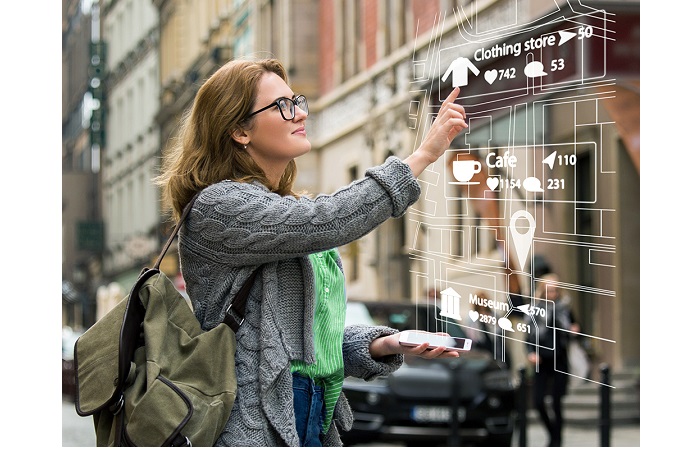
Lorelei Bowman
When we begin to think about the possibilities of an HR department powered by artificial intelligence, it’s easy to get carried away into a robot-centred daydream. But the reality of AI’s relationship with HR is much less science-fiction, and much closer to home.
Today, AI is already at work in ways we don’t see: things like LinkedIn’s auto-responses prompting you to say ‘Congratulations’ on a colleague’s promotion announcement, Amazon’s personalised shopping recommendations or Gmail’s Smart Reply which uses machine learning to craft replies to your inbox.
If we start to look into HR’s use for AI, the focus should always be in enabling HR to refocus their time on strategy and human interaction. Too often, the burden of administration can weigh HR down. By utilising this technology, HR can reduce time-consuming admin and reconnect to the more human elements of their role.
Who’s working in this space at the moment?
Unsurprisingly, tech giants like Apple, Microsoft and Amazon are leading the way with AI. Existing AI assistants like Apple’s Siri, Amazon’s Alexa and Google Home show the possibilities for workplace virtual assistants.
“Personas like Alexa and Siri are simple, intuitive, and don’t judge – they don’t get irritable if you forget to say ‘thank you’, they don’t get tired of answering the same question ten times, and they have instant access to almost infinite information.” – Matt Macri-Waller, Founder & CEO, Benefex
But what about when it comes to HR-specific functions? Whether you’re an AI expert or new to the ball game, a quick web search will reveal a huge number of companies already working in this space:
- Ascendify and Palatine Analytics help HR gain real-time insight into their people’s performance and even select candidates fit for a promotion.
- Textio helps analyse writing for unintentional messages, such as gender bias, then suggests alternative wording.
- Veriato and Workday offer AI platforms designed to analyse activity and determine abnormal activity patterns, aiming to reveal unhappy or unproductive employees.
- Leena AI and Spoke act as HR chatbots, answering common employee questions. Spoke will even send unknown questions on to the correct team to answer.
Not to mention, there’s already a plethora of AI-powered recruitment assistants used to source, screen and interview candidates through machine-learning and facial recognition software:
- DBS Bank’s ‘JIM’
- HireVue Inc.
- Arya
- Entelo
- Ideal
- GoHire
- Hire Abby
- Restless Bandit
- Wade & Wendy
- XOR
- Hiretual
- Mya Systems
- Woo
- Koru
- Olivia (Paradox)
How AI can be used across HR:
Not only can AI offer quicker processing for admin, but it also frees up HR’s time, resulting in a two-fold ROI. But its impact on HR will go beyond ROI in the (near) future…
- Simplify policy documents and help employees understand complex documentation, Ts&Cs and benefit policies.
- Automate monotonous tasks and eliminate human error for precise tasks like payroll or benefit enrolment to free up HR’s time.
- Decision-making assistance bots for complex reward and benefits decisions.
- Analyse and process recruitment and new starter info, such as CVs, video interviews and induction emails.
- Pre-empt wellbeing issues and provide support for employees.
Simplifying – Research shows that almost half of employees don’t understand their benefits collateral. Once you get into terminology like auto-enrolment, group risk and SSO, people simply switch off. What’s to say we can’t use AI to help with this? AI-powered data and simplification can be phenomenally powerful: AI can take long, complex policy documents or handbooks and condense them in a way that makes sense to everyone – regardless of prior knowledge or experience – without losing the key information. As a result, employees can then ask questions on a very human level and make informed decisions for themselves.
Automating – Thanks to AI, automated processes are another big area of assistance for HR; benefits enrolment, recruitment and payroll take up a massive amount of time which could be better spent focussing on strategy or individual employees. From video interview analysis and candidate-screening tools, to automated payroll management and virtual benefits advisors, AI could be the personal assistant HR needs to free up time and streamline administration.
Supporting – One potentially life-changing area where AI’s impact can be felt is employee wellbeing. Already, chatbots exist to provide support, a listening ear (or microphone!) and coping techniques to help people struggling with their mental health. Chatbots like Woebot, Joy or Wysa are powered by machine-learning, comprehensive copy, and knowledge of professional counselling practises. While most acknowledge they are in no way a replacement for professional help, these systems provide a non-judgemental listener to people who may otherwise remain isolated, or feel unable to reach out. And with waiting times in excess of two years for professional therapy on the NHS, chatbots can be far more accessible for short-term or interim assistance.
So what’s to say we can’t have similar workplace wellbeing bots? A friendly robot on the intranet to talk to when HR feels too daunting; a wellbeing advisor when looking at health benefits or decision-assistance to help explain complex financial problems. Of course, these should all point back to professional help, and support from an HR department, but why can’t an AI-powered chatbot support your EAP?
So, is HRobot the future of the workplace?
Well, undoubtedly – yes. But not necessarily in the way we think. Integrating AI with HR doesn’t have to mean job-replacing, autonomous, 24/7 robot workers. It can mean helping HR focus on people again, it can mean an employee feeling less alone, it can mean your people making the right financial decisions for them…
We may be a way off from a fully AI-powered workplace, but the possibilities of machines at work don’t have to be scary and cold. In fact, they may even help us to be more human.